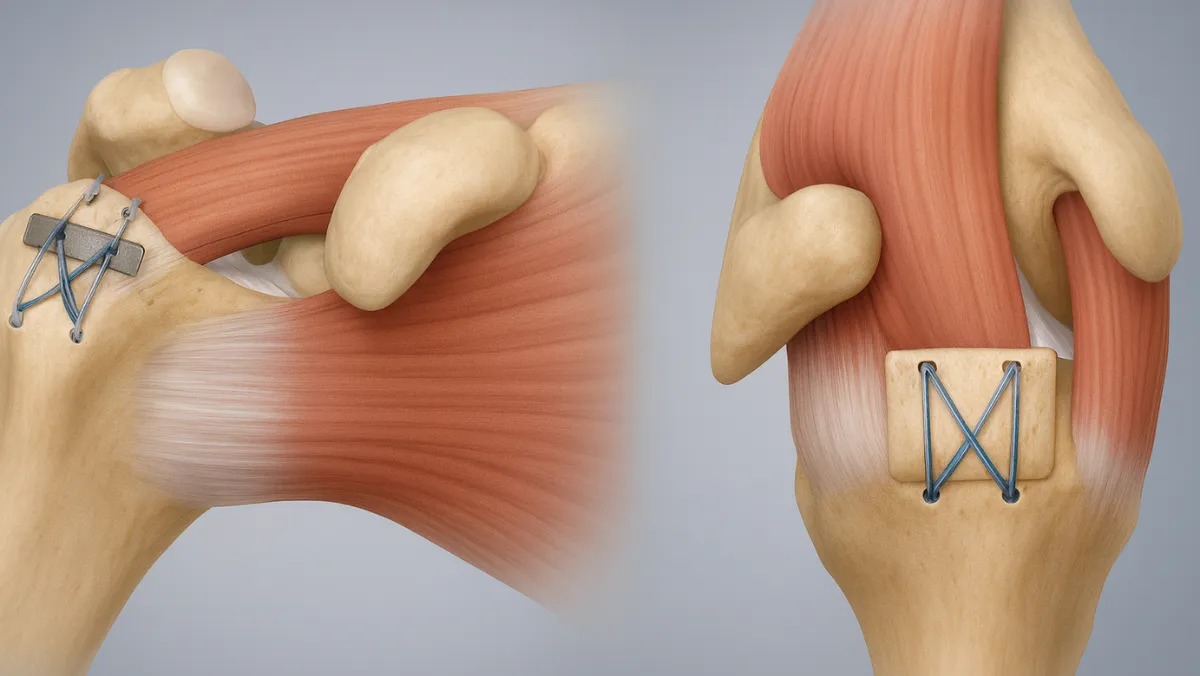
Safety Rate
The rotator cuff is a group of muscles and tendons that connect the shoulder blade to the upper arm bone, playing a crucial role in stabilizing and moving the shoulder joint. Rotator cuff tears are common injuries that can arise from repetitive overhead motions, sudden trauma, or natural wear and tear over time. When these tears occur, they can cause pain, weakness, and limited mobility in the affected shoulder, hindering daily activities. In such cases, rotator cuff repair surgery offers a solution to restore function and relieve pain.
Rotator cuff repair is a surgical procedure designed to repair torn tendons in the shoulder, restoring strength and mobility to the joint. This surgery is commonly performed Arthroscopically using a minimally invasive key hole technique that requires only small incisions, reducing pain, scarring, and recovery time compared to traditional open surgery. The procedure aims to reattach the torn tendon to the bone, allowing the shoulder to regain its full range of motion and stability.
Rotator cuff injuries can result from a variety of causes, including:
Injuries to the rotator cuff can lead to severe pain, especially when raising the arm or performing overhead tasks. Additionally, untreated rotator cuff tears can result in shoulder instability, weakness, and further damage to the joint. Rotator cuff repair surgery aims to alleviate these symptoms and restore functionality.
Rotator cuff repair is typically performed under general anesthesia, ensuring the patient is comfortable and pain-free during the procedure. The surgeon makes small incisions around the Shoulder Rehabilitation, minimizing disruption to the surrounding tissues.
Compared to traditional open surgery, the minimally invasive approach offers several benefits:
After the surgery, patients are usually required to wear a sling for several weeks to immobilize the shoulder and promote healing. The recovery process varies based on the severity of the tear and the type of repair performed. Initial recovery focuses on reducing swelling and pain, while later stages involve rehabilitation exercises to restore range of motion and strength.
Physical therapy plays a crucial role in the recovery process. It typically begins once the initial healing phase is complete, and exercises focus on gently increasing shoulder flexibility, strength, and endurance. As patients progress, more advanced exercises are introduced to improve functional movements and ensure full recovery.
Rotator cuff repair surgery is an effective solution for individuals suffering from torn tendons in the shoulder. The minimally invasive approach offers significant advantages, including reduced pain, faster recovery, and minimal scarring. By repairing the damaged tendons and restoring strength and mobility to the shoulder, this procedure helps patients return to their normal activities with improved function and reduced pain. If you are experiencing shoulder pain or limited mobility due to a rotator cuff injury, surgical repair may be the key to achieving a full recovery.
Rotator cuff repair is considered a major orthopedic surgery because it involves repairing torn shoulder tendons that are essential for arm movement and stability. Whether performed arthroscopically or through an open approach, it requires anesthesia, post-operative immobilization, and structured rehabilitation. Although minimally invasive techniques reduce trauma, the recovery process is significant and takes several months for full function to return.
Pain during rotator cuff repair is not felt due to anesthesia, but discomfort is common afterward, especially in the first few days. Pain is generally controlled with medications, cold therapy, and immobilization. As healing progresses and therapy begins, pain gradually decreases. Most patients report manageable pain within a few weeks, but soreness can persist during rehabilitation phases.
After rotator cuff surgery, the worst actions include lifting heavy objects, moving the arm above shoulder level, driving too soon, skipping physical therapy, removing the sling early, sleeping on the operated side, or performing sudden jerking motions. These mistakes can strain the repair, delay healing, or cause re-tear. Strict adherence to surgeon and therapist instructions is essential.
Take the first step towards pain-free living. Book your consultation today and discover personalized treatment options tailored to your needs.